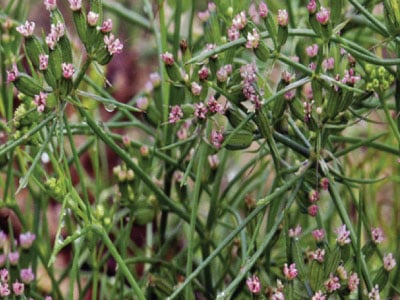
Learning Download: How to Grow Cumin
From Seed to Harvest: A beginner’s guide to growing Cumin
Cumin is a popular herb used in Indian and Mexican dishes. it has fragrant foliage that resembles dill that can be added to salad mixes. Although its foliage resembles dill, cumin is actually a member of the parsley family. In addition to adding its foliage to salads, cumin seeds are often used as seasoning. Cumin also will grow white or pink flowers beginning midsummer. Cumin plants can reach up to 24 inches in height.
To plant:
Cumin has a longer growing season so begin indoors four weeks before the last spring frost. Plant seeds 1/4 inch deep and keep the soil moist until the seeds germinate. Once the minimum temperatures outside reach at least 60 degrees Fahrenheit, transplant the cumin outdoors. If beginning cumin outdoors, plant one or two weeks after the last frost date. Plant a group of four seeds every 4 to 8 inches. Although cumin can be planted early indoors to get a head start on the growing season since it takes a long time to grow, the plant is difficult to transplant and if grown in warmer climates, cumin should be directly sown outdoors.
To grow:
Once seedlings are 2 inches tall, thin them to one plant every 4 to 8 inches. Although Cumin can grow in a wide range of soil types, it requires full sun and does best in fertile, well-drained soil. It will tolerate soils with a pH of 6.8 to 8.3, but the ideal range is 7.0 to 7.5. Be careful not to overwater cumin plants, and let the soil get almost dry before watering again.
Cumin can be susceptible to root rot if it is watered too much, though cumin grown in a container needs to be watered more often as they dry out quicker than those planted in the ground.
Cumin flowers are fragrant and will attract friendly insects that can help in controlling small pests. Since cumin flowers are shallow and arranged in an umbel, they attract predatory insects like parasitoid wasps and ladybird beetles. Plant cumin near crops that attract caterpillars or aphids to help control those pests. Although cumin can control pests in the garden, it also grows well in containers like most herbs.
To harvest:
Cumin has a longer growing season than most herbs, taking 120 days to mature. As soon as seed heads can be seen but before they fall from the seed head, it is time to harvest.
Cut the entire stem and then hang upside down in a paper bag or over a container that will catch the seeds as they fall out. Harvest the leaves whenever they are large enough to be used in a salad. Cumin seeds can then be used ground up or whole.
What cumin craves:
Fertilize cumin with a natural compost tea during its growing season and avoid fertilizers with high nitrogen.
Where to buy cumin seeds:
You can find cumin seeds at Urban Farmer.

